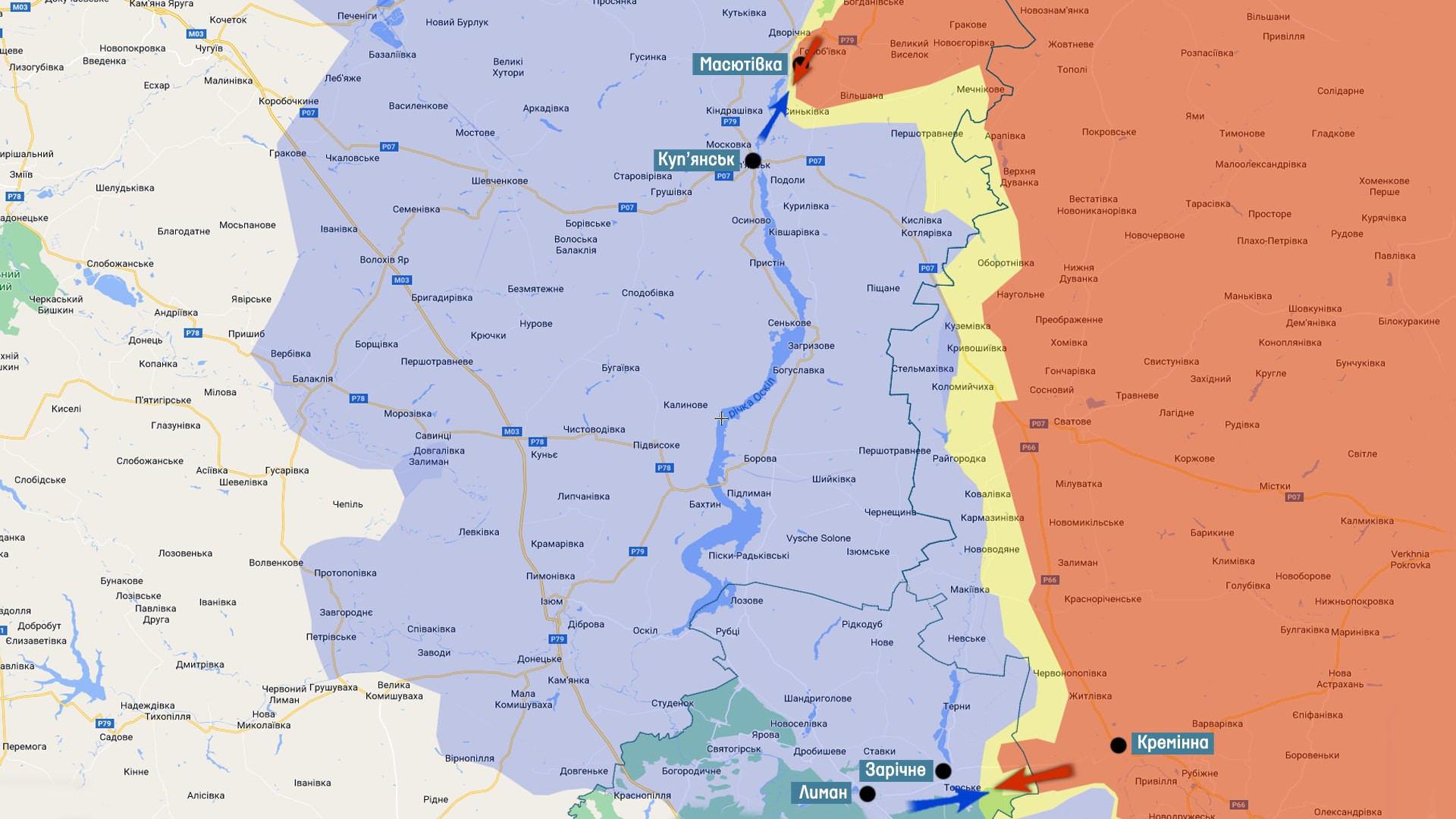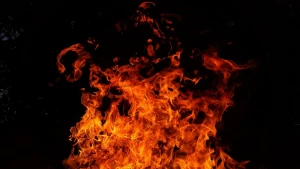
Moscow drone attack and frontline calm before the storm - Serhiy Zgurets’
On the morning of May 30, the Russian capital was massively attacked by drones. Russian Ministry of Defense officially reported eight UAVs, although there were way more
Unknown drones launched a massive attack on the Russian capital, Moscow, on the morning of May 30.
The aggressor's Ministry of Defense officially acknowledged eight UAVs, although the actual number exceeded 30 according to various estimates. Some of the drones were targeted by the enemy's Pantsir air defense system, as evidenced by footage showing missiles being fired. Additionally, enemy electronic warfare (EW) systems disrupted the course of certain drones. Although debris from the attack hit residential buildings, there were no reports of serious injuries. This incident once again exposed the vulnerabilities of Russian air defense systems.
Furthermore, this action had a significant psychological impact on the Russian population, similar to the recent raid by the Russian volunteer corps in the Belgorod region. The drone attack serves as a reminder that war is not a one-sided affair, but a lethal two-way engagement that can reach even the territory of Russia.
It appears that this strike had clear goals. The map of the attacks and the locations where the drones fell suggest that the houses of the so-called Putin elite in Rublyovka, Barvikha, and other areas were the intended targets. Analysis by the opposition publication Project Media indicates that high-ranking officials, including the Minister of Defense, the head of the Russian Guard, two deputy ministers of defense, Prime Minister Mishustin, and the Minister of Finance, reside in the Barvikha area. Targeting the residences of individuals involved in war crimes can be seen as a legitimate objective for drone usage.
However, the performance of these unmanned systems can be improved. It is essential to enhance their striking capabilities. The Russians, unsurprisingly, are blaming Ukraine for the attack and are analyzing the drones, as they differ from those previously used in attacks against the Russian Federation. The new drones feature a distinctive aerodynamic design, with small wings in front and larger wings at the rear. One such drone was shot down and subjected to analysis of its warhead, which utilizes a cumulative charge weighing up to 4 kg. Ukraine, rightfully, denies any involvement in this operation, and we will continue to monitor its developments.
The situation on the front line
Regarding the current situation on the front line, the General Staff of the Armed Forces of Ukraine has reported that the enemy refrained from conducting offensive actions in three out of six directions during the day. This relative calm could be seen as calm before an upcoming storm, as the enemy seems to be preparing to go on the defensive before a large-scale campaign to liberate the occupied territories. However, there are still isolated instances of offensive actions by the enemy, particularly in the Kupyansk direction, although these attempts have been unsuccessful. The entire front line from Kupyansk to Svatove and Kreminna remains highly tense and challenging. Even though the focus may have shifted to the hostilities in Bakhmut, this section of the front remains very difficult for both the aggressor and our military.
Svatove-Kreminna direction
Ruslan Andriyko, an officer of the Armed Forces of Ukraine and a fighter of the Freedom Legion, provided preliminary information regarding the line from Svatove to Kreminna, specifically mentioning Dibrova and Bilohorivka. According to him, the enemy is most actively engaging in offensive actions near Kupyansk, targeting settlements such as Kuzemivka, Novoselivka, and Masyutivka. Despite some losses, the heroism of our defenders has halted the advancement of Russian troops.

Andriyko noted that the enemy's traditional attacks occur near Bilohorivka and the Serebryansky Forest district, as they attempt to enhance their tactical position. Concentrated in the Svatove-Kreminna line, particularly in the settlement of Kreminna, are numerous elite units of the Russian army, along with a significant deployment of personnel and armored vehicles, including the latest Russian Federation models. The concentration of Russian troops in this area might even surpass that in Bakhmut. Nevertheless, the operational and tactical situation here is comparatively favorable. Our military has managed to maintain a relatively stable front line, although localized battles persist. The enemy launches small-scale group attacks, conducts aerial reconnaissance using advanced UAVs, attempts breakthroughs with armored vehicles, and suffers heavy losses in retreat. There are areas where our army is liberating Ukrainian territory incrementally, meter by meter, as our frontline defenders draw closer to achieving complete liberation of Donbas and the entire territory of independent Ukraine.
Regarding Masyutivka, an officer mentioned that from a strategic standpoint, it may seem unnecessary to deploy a large number of soldiers and equipment for such a small village. However, based on the example of Bakhmut, where the enemy stationed hundreds of thousands of troops to occupy a completely destroyed city, a similar pattern emerges in Masyutivka. Their objective appears to be reaching the Oskil River. Currently, our military faces a more challenging situation, with the enemy pushing them against the river. Nonetheless, our fighters successfully repel the enemy's attacks, inflicting significant losses.
Andriyko also commented on the ammunition situation, noting some improvements but expressing the need for more. The promises of our allies have resulted in the delivery of weapons and equipment, yet it remains insufficient for conducting counteroffensive actions across the entire front. The international community must recognize that an adequate supply of weapons is crucial for their own security. It enables us to neutralize the Russian Federation and prevent a war on their territories. Additionally, we need to study Russian equipment thoroughly and enhance our methods of defeating it. Ultimately, it is imperative to understand that their machinery can be destroyed with suitable weaponry.
The officer stressed that our fighters are currently facing adversary forces consisting of elite military units. These units, such as the Airborne and Air Assault Troops, require extensive resources and training to establish and maintain. It is against these forces that our defenders are engaged in military operations. It is evident that the enemy is advancing both technically and tactically. They are employing small-scale group assaults, often utilizing a significant number of kamikaze drones at their disposal. We must address this method of warfare, specifically the utilization of attack drones and kamikaze drones. Another concern is their use of grenade drone drops.
Ruslan Andriyko emphasized the need to enhance our tactics and operational expertise in deploying attack drones, as the enemy continues to make progress and pose a threat to our military across various sectors of the front, including Svatove-Kreminna. Over the course of the 15-month conflict, numerous Ukrainian enterprises have ventured into developing diverse unmanned aerial vehicle systems equipped with reconnaissance, combat, and strike capabilities.
The development and creation of UAV systems in Ukraine have both positive and negative aspects
According to Viktor Taran, the head of the Center for the Training of Aviation Operators, noted that today we have two types of news, good and bad. The good news is that Ukraine has a decent supply of FPV drones, which are equipped with receivers and screens for real-time video display. Recently, on May 29, regulations were passed at the state level to simplify the import of components for strike drones. However, the availability of these components and parts is insufficient, creating a challenge in assembling the complete FPV drone system. Unfortunately, the state is not procuring these systems.
Taran emphasizes that flying FPV drones is more challenging compared to ordinary drones, requiring specialized training for operators. However, Ukraine lacks sufficient centers that can provide professional and high-quality training for operating such drones. The progress in this area is slow, it needs further efforts.
Taran believes that the state should procure FPV drones and place orders for cadets, establishing a systematic approach. It is crucial to prioritize a systematic strategy to sustain the development of UAV capabilities. Without a systematic approach, the progress achieved so far may eventually fade away. Therefore, the state needs to publicly announce its commitment to this new field. It is essential to continue supporting educational institutions, as the Ministry of Digital Transformation has halted funding for the Drone Army since March of this year. Reports stating that the Ministry has trained 10,000 drone operators are somewhat misleading, as these operators were trained by 15 schools that received partial assistance from the Ministry. Unfortunately, this support ended on March 31, putting schools in a challenging situation. Schools are currently finding alternative solutions and seeking help from partners. There is hope that the Ministry of Digital Transformation will reinstate the program to support educational centers, as the closure of these schools seems imminent without adequate assistance.
It is very important to bring up this topic. The team, in collaboration with the Espreso TV channel, is committed to preventing the closure of these schools and providing support. Furthermore, we hope that FPV drones will find wider applications on the front line to effectively neutralize enemy targets.
- News














































